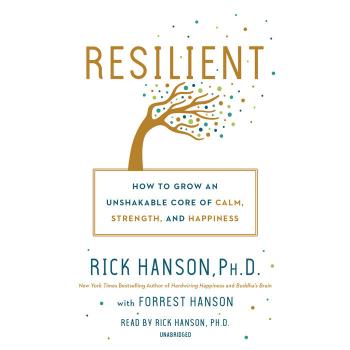Sex, God, and the Conservative Church by Dr. Tina Schermer Sellers, PhD
In Chapter One, Sellers critiques the Evangelical church and its conservative approach to sexuality. She describes how purity rings, and abstinence campaigns help to develop a culture of sexual shame. She uses a simple illustration to describe this approach (73):
“‘Imagine for a moment one of those huge lollipops, the kind that you buy at an amusement park candy store. Take off the wrapper, and pass it around to ten people. Allow them to lick as much as they want. The leftover is saved for the husband or wife, the rightful owner of the lollipop.’ Yuck! Who would want that?””
Sellers explains that this is the message sent to kids in purity evangelical households. This illustration shows the kind of shame and guilt that is projected upon kids who engage in sexual behavior (74).The unforgiving message of sexuality is coupled with the covert message that women are the property of men (75). Sellers correctly maintains that instead of developing a proper sexual ethic, evangelical churches promote a form of religious sexual shame. These churches have not taught about God, His nature, and His reason for creating sex and how God’s love is expressed through a sexual relationship in marriage (89).
In Chapter Two, Sellers traces Christian thought about sexual relationships and the influences of Hellenistic, Stoic, and other Greek thought. She also shows how the “Enlightenment” during the Reformation didn’t really reform Christian thoughts about sex, but deepened the distance between sex and relationships in Christian thought and practice. The moral code of Jesus (Matthew 22:37-39, Mark 12:28-31, Deuteronomy 6:5, Leviticus 19:18) changed into a set of Christian sexual ethics based on a list of “do’s” and “don’ts” (116). For example, Paul’s emphasis was not on sexual ethics per se, but on the structure of the household. He focused on immorality and how it affected the household structure (118-119).
Sellers summarizes the result of this change by quoting from the book Just Love: A Framework for a Christian Sexual Ethics by Margaret Farley. The book describes the confusing and sometimes conflicting sexual ethics that appears throughout the New Testament as a result. This is an ethic that: “1) Values marriage and procreation on the one hand and singleness and celibacy on the other; 2) Gives as much or more importance to internal attitudes and thoughts as to external actions and 3) Affirms a sacred symbolic meaning for sexual intercourse, yet both subordinates it as a value to other human values and finds in it a possibility for evil.” (118) Throughout the movement from the ancient to modern, and finally postmodern era, Sellers notes that “the church spent so much time building a society that they lost sight of the Christian message” (128). Sellers spend the rest of Chapter Two to provide a primer on Christian sexual ethics (131).
In Chapter Three, Sellers explores the effect of American consumerism on the Christian sexual ethic (138). She explains that there three faces of a marketing myth (146). Three messages we communicate in American society through marketing (147). The result is a constant sense of inadequacy. Sellers states:
“By doing so, we communicate three messages to the public observer:
1. If you do not have this or look like that or live like this, you are inadequate, less-than, and undesirable, so you must pursue those ideals.
2. As we chase after those ideals, our lives seem busier, faster, and more distracted. We begin to lose the time we need to cultivate that which makes life most meaningful: loving relationships, a generative passion, and for some, a lived faith.
3. Insofar as the culture emphasizes disposability, where the new version is always better than the old, we inevitably adopt consumerist thinking in our relationships themselves.”
Sellers aptly considers the connection between having stuff and the quality of life. The catch-22 in which we work to earn more, just to keep up with what work allows us to buy. We end up spending too much time buying stuff and worrying about how to earn enough to live this lifestyle (151). Sellers describes how American consumerism diminishes one’s sexual vitality (155). Marriage is not a product to be consumed (although advertisers would have you believe otherwise) (164). It destroys marriage because it communicates the message:
“I’ve been putting off what I want for so long, and so I deserve this.”
If consumer culture teaches us that new is better than the old, that I have a right to have what I want, then I risk objectifying people. When applied to relationships, and especially marriage, it turns our marriage into a product to be consumed. Since most people don’t understand how intimacy develops over time, one becomes dissatisfied with the other person and is willing to dispose of that relationship (165). Sellers provides an eight-point checklist to see if your marriage is becoming a consumer marriage (169). Sellers ends Chapter Three with a great definition of marriage (171): “Marriage is not a product. It is a process, a lifestyle that seeks to grow you into a better person.”
In Chapter Four, Sellers introduces the lost message of a sex-positive God (181). Sellers suggests that the reader to uncover Hebrew stories that demonstrate a “celebratory” understanding of sexuality – one that was neglected in the formation of the Christian church (182). She notes that “humans are the reflection of God’s creative life-force of love and desire” (185). Unfortunately, Sellers clarifies (hidden in a footnote no less!) that because God is both male and female, there is no distinction between LGBT and heterosexual relationships (185).
Sellers contrasts the messages we get in the Bible about the desires of the heart. Jeremiah 17:9 against Psalm 37:4 (188). She endorses the trichotomous view of the person (191). Sellers applies the trichotomous view of personhood applied to God Himself. Jesus is the body. God is the mind. The Holy Spirit is the Spirit. These combine to express the love of God (193). Sellers notes that other religions show how the sexual relationship could be a form of worship. She’s asks: “Why not the Christian religion?” (195)
Sellers believes that sex ignites the creative force of God in both the man and the woman (199). Therefore, her hermeneutical lens is the Song of Solomon. She reasons that The Scriptures are holy, but the Song of Songs is the Holy of Holies (206). All other Old Testament texts must serve the purpose of the Song of Songs. The Song is about experiencing God’s presence and essence through a passionate, awe-inspiring, and boundless love. God’s love and human love melts into an experience of the God of Love (206-207). Sellers ends Chapter Four with a brief analysis about healing sexual shame (228).
Sellers begins Chapter Five with a set of strategies for a new sexual ethic that include sex positive-Gospel (235). In this new paradigm, the core of the ministry of Jesus was love in action (242). Instead of being behavior and rules driven, accountability needs to be values- and relationship- driven. (248-249). Sellers shows research that endorses the view that when views on sexual relationships and religious life are integrated, there is higher sexual satisfaction (257).
Sellers explores the clinical application in Chapter Six (275). She explores “The Four Elements of Healing Religious Sexual Shame”(285-292). Summarized, these four elements are:
1. FRAME – Build a framework of sexual knowledge.
2. CLAIM – Claim and celebrate your body.
3. NAME – Name and share your story.
4. AIM – Aim to live your sexual legacy
Sellers refers the readers to resources at the Northwest Institute on Intimacy website (nwioi.com) for ideas and ways to apply these four elements.
In Chapter Seven, Sellers shares sex therapy intervention techniques, which are used to increase intimacy (305). In in Chapter Eight, Sellers offers ideas that will “invite clients to leave their old habits of sexual relating that do not engage their whole being and do not draw them deeper into the experience of love—God’s love and the love of their partner.” (311) Sellers uses a set of continuums to explain the paradigm shift of changing definitions of sexuality. As she describes:
“Each of the seven dimensions of the Anatomy of Intimacy are placed on a continuum of positive, negative, and a quality that lies between, what I call “slack-tide.” (314) These continuums include the anatomy of (1) body intimacy, (2) sensuality, (3) desire, (4) the heart, (5) trust, (6) the aesthetic, and (7) the ecstatic.
I found the book helpful in some places. For example, I concur with Sellers on many points in her analysis about the need for a more positive message about the role of faith in matters of sex. However, I disagree on some points because she uses the lens of psychology to interpret Scripture. Positive sex should be sex as God designed it. God designed sex to monogamous between a man and woman within the marriage relationship. I did enjoy the book and I think it will be a great addition to a pastor’s library.
Disclosure of Material Connection: I received this book free from the author and/or publisher through the Speakeasy blogging book review network. I was not required to write a positive review. The opinions I have expressed are my own. I am disclosing this in accordance with the Federal Trade Commission’s 16 CFR,Part 255.














